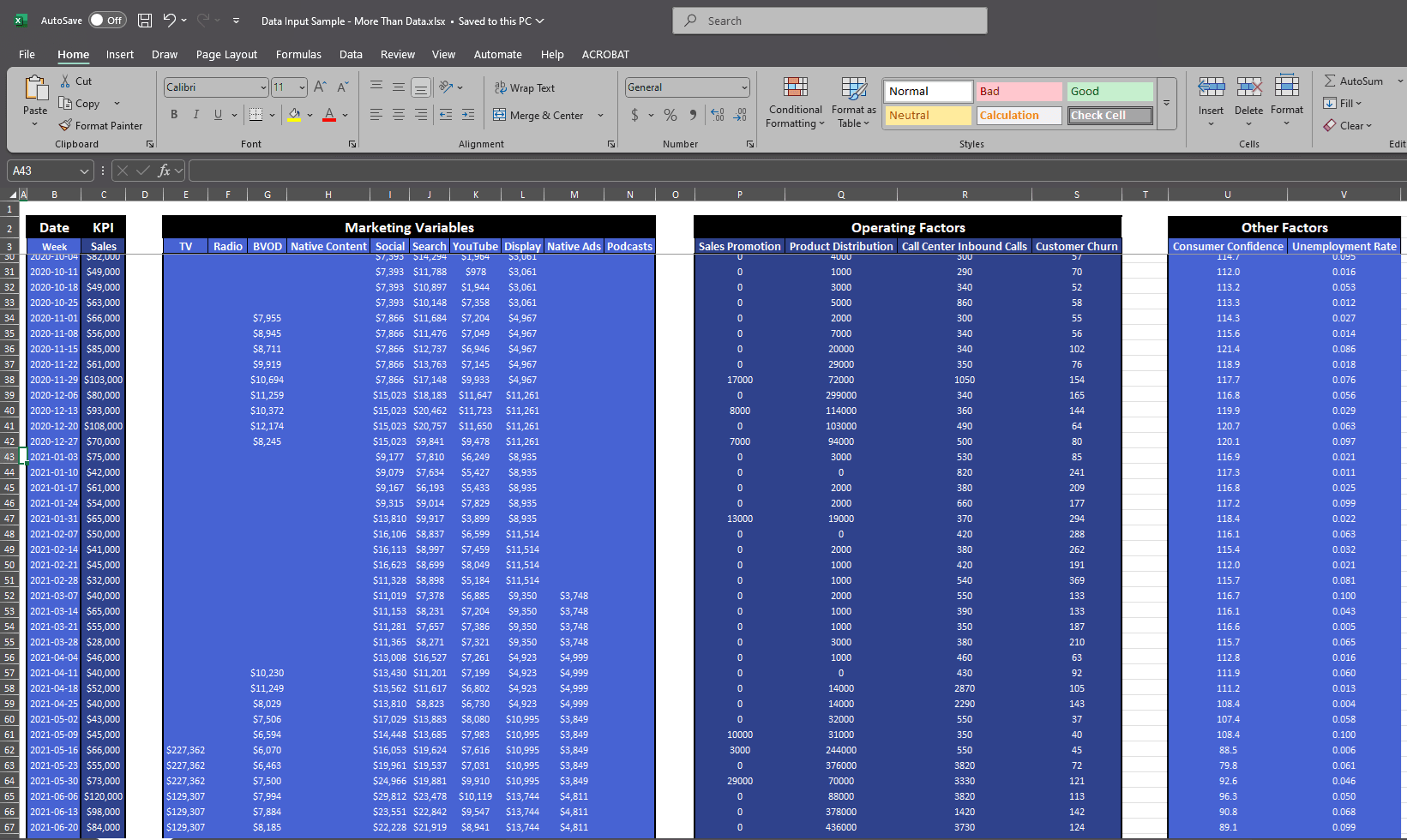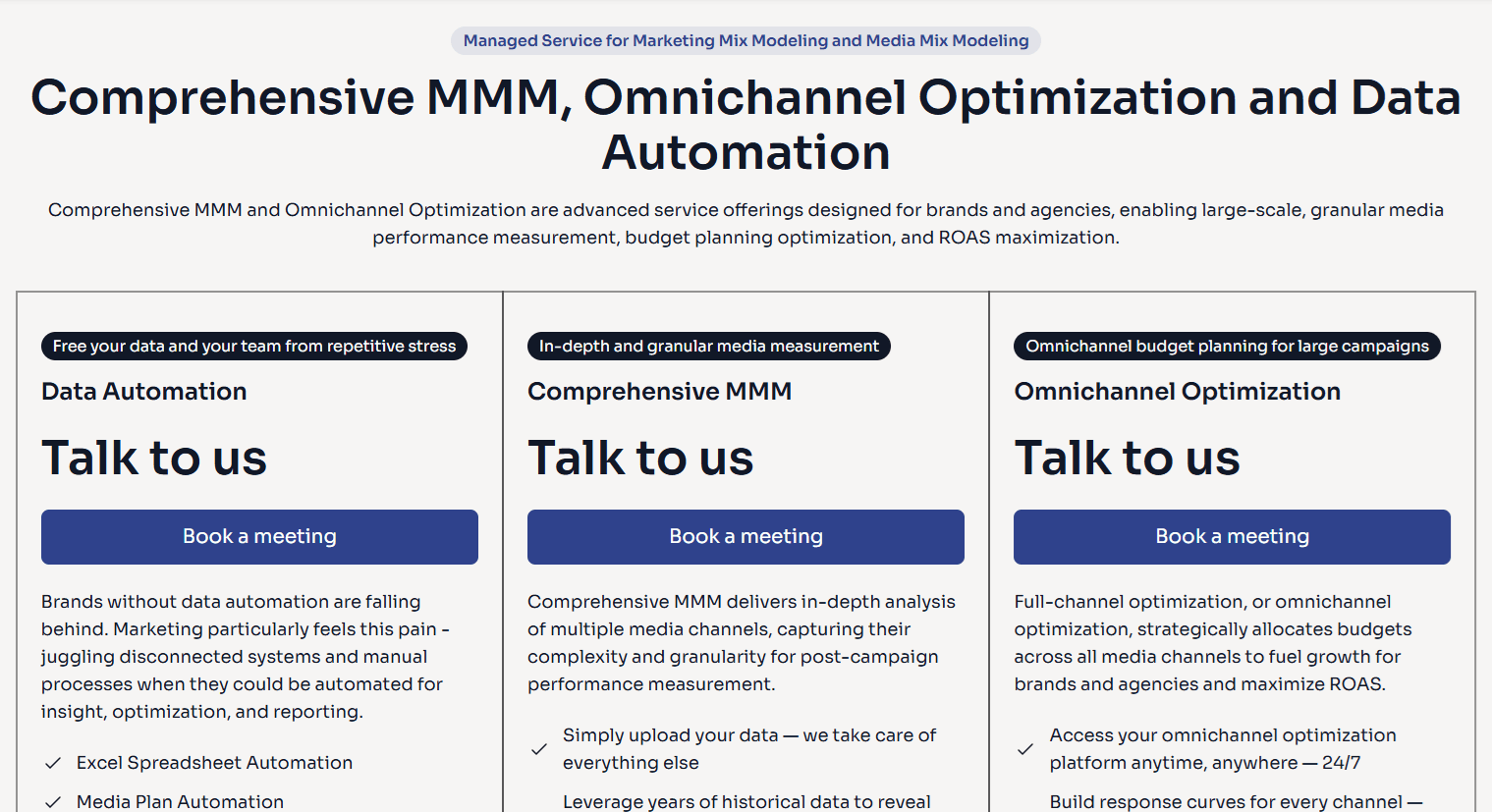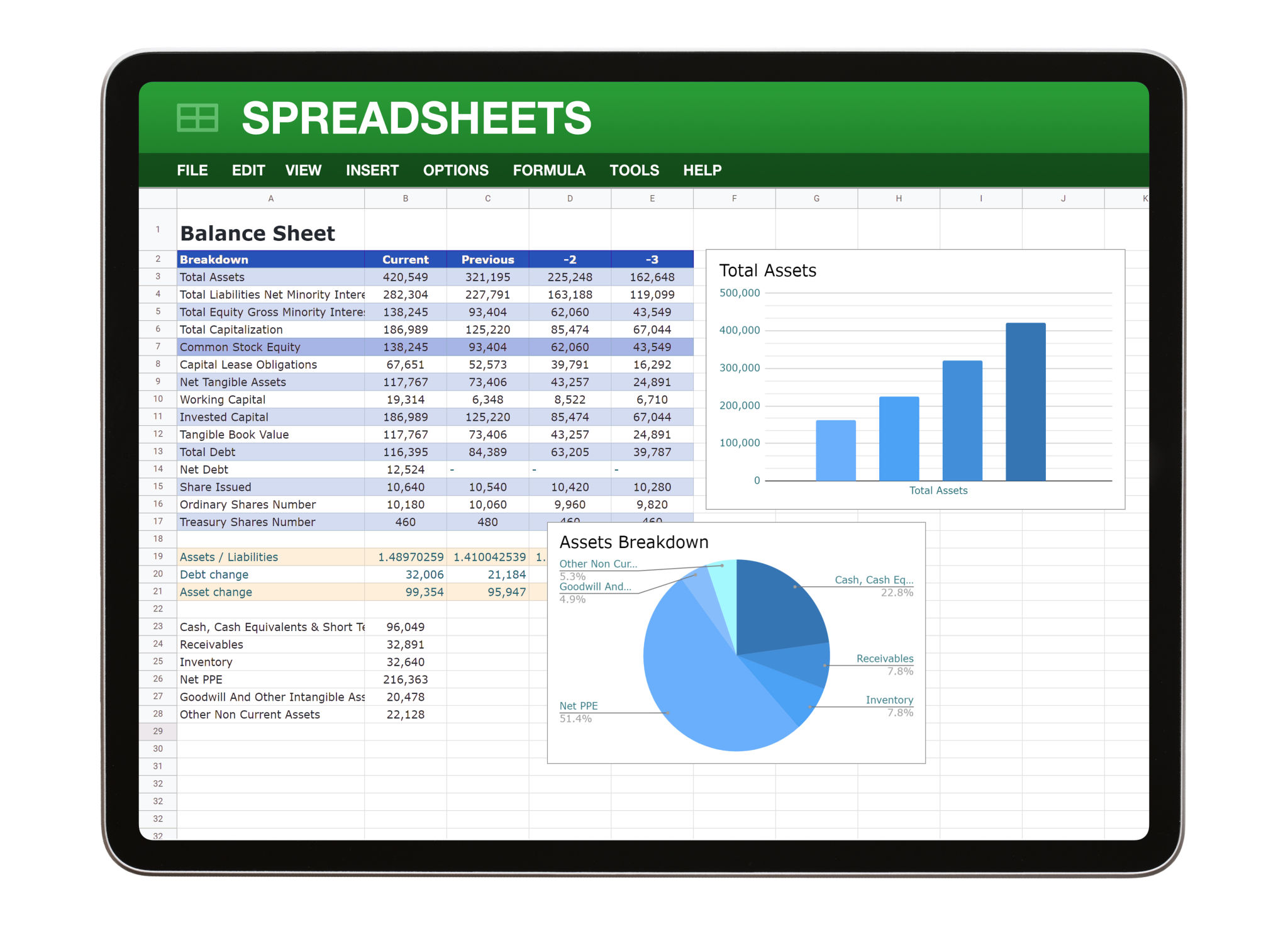The 20/80 Rule of Marketing Mix Modelling: Why Your Data Matters More Than You Think
Let’s Talk About the 20/80 Principle
You’ve probably heard of the Pareto Principle — the classic 20/80 rule. Twenty percent of effort leads to 80% of results. It pops up everywhere: business, fitness, even household chores.
But here’s the twist. When it comes to Marketing Mix Modelling (MMM), the 20/80 split looks a little different.
At More Than Data, we’ve done everything in our power to simplify MMM for non-technical users. We’ve automated, polished, and streamlined the process so you can get insights without touching a single line of code. Honestly, we’ve finished about 80% of the MMM journey for you.
But that last 20%? That’s on you, my dear users and clients.
Why? Because you — and only you — hold the keys to the most critical part of the process: your data.
Whether you’re using our self-service platform or working with us through managed services, the fact remains: you run the campaigns, you buy the media, you track the sales, and you’re the one eager to see how it all translates into revenue and growth. We can’t source that information for you. Only you can.
And here’s where things get interesting. That 20% of work on your end? It’s not just 20% in importance. It’s more like 80%.

Why Your Data Is the True Hero
Without your data — the right, good-quality data — there’s no MMM. No insights. No improvement and progress.
We can build the smartest models in the world, but if your spreadsheets are missing, messy, or misaligned, then the whole system grinds to a halt. Your effort in preparing and supplying data is the foundation of everything.
And let’s be honest — preparing data isn’t glamorous. In fact, it can feel like the least rewarding part of the job. Imagine staring at a mountain of Excel sheets, each one a cryptic puzzle of dates, impressions, clicks, or sales transactions. You know the information you need is in there… somewhere. But getting it into a clean, usable format? That’s the stuff of late-night sighs and too much coffee.
Sometimes, it means diving into your ERP system, hunting down sales records. Or firing off SQL queries to wrangle revenue figures from a database. Or chasing down colleagues in different departments to get answers to the eternal questions: “Where is that data? What format is it in? Who owns it?”
Even once you’ve tracked it all down, you’re still stuck with reconciling campaign reports, media invoices, and performance metrics. It’s the business version of assembling IKEA furniture without the manual — except the screws are scattered across ten different spreadsheets, and the instructions are written in three different languages.
Sounds exhausting? That’s because it is. And yet, it’s unavoidable.

Why We Ask You to Feel the Pain
Now, you might be wondering — if data prep is such a nightmare, why don’t we just take it off your plate entirely?
Here’s the cheeky truth: we want you to feel a bit of that pain.
Not because we enjoy watching you sweat over spreadsheets (we promise, we don’t!). But because data-driven business management is non-negotiable in today’s world.
If you don’t know your numbers, you don’t know your business. No tracking? No improvement. No monitoring? No optimization.
Marketing is one of the biggest areas where businesses bleed money — and the only way to stop that is by shining a big, bright light on what’s working and what’s not. That requires tracking. That requires monitoring. That requires — you guessed it — clean, reliable data.
And the truth is, no one knows your business better than you. Not your agency, not your consultants, not even us. You’re the one living it day to day. Which means you’re the only person who can truly track the heartbeat of your brand.
So yes, we encourage you to DIY your data prep. Because once you’ve gone through the effort of pulling, cleaning, and aligning your data, you’ll not only get better results from MMM, you’ll also gain a deeper understanding of your own business.

The Good News: You’re Not Alone
But here’s the thing: we don’t leave you stranded in spreadsheet hell.
On our website, you’ll find a handy “Can You DIY?” check. It’s a simple guide that shows you exactly what kind of data you need, what format it should be in, and how to get started.
We also provide a Data Preparation Handbook. Don’t worry — it’s not a 100-page monster written in data jargon. It’s just a few pages of clear, practical advice:
- Good examples of data that’s ready to go
- Bad examples of common mistakes to avoid
- Notes and tips that help you steer clear of the usual pitfalls
And if DIY still feels impossible? That’s fine too. We’ve got your back. We can help you collect, process, and structure your data into an MMM-ready format. Because while we want you to experience the process, we don’t want you to drown in it.

Three Real-World Stories That Broke Our Hearts
Let me share three true stories that still sting when I think about them. I’m not telling you these to make you cry — but to make you aware, so you don’t end up in the same painful situations.
The Promotions Data Odyssey
Picture this: a media agency spends eight weeks — yes, eight — trying to pull together promotions, pricing, and discount data across few retail networks. Seventeen meetings later (some in-person, some online), and after forty-eight back-and-forth emails, they still struggled to get something usable.
Eight weeks of effort. Practically a mountain climbed. And at the top? Not much to show for it.
This is exactly the kind of slow grind we don’t want you stuck in.
👉 This article explains how More Than Data helped an FMCG brand process and measure promotions data across its retail network, including Coles, Woolworths, and IGA: Quantifying Promotion Impact: A Marketing Mix Modelling Deep Dive into Woolworths, Coles, and IGA
The PDF-to-Excel Nightmare
Here’s another one. Two junior media planners spent 6–8 hours every single week converting TV campaign post-reports from PDFs into spreadsheets. Manually. Pivot tables. VLOOKUPs. The whole nine yards.
Week after week. Month after month. Imagine what else they could have been doing with that time — strategy, creativity, anything more impactful than typing numbers from PDFs.
We showed them how to automate the process, and suddenly the mountain of boring work turned into a two-minute task. That moment of relief? Priceless.
👉 This article highlights how More Than Data helped young media planners and buyers by automating PDF-to-CSV conversion, cutting their workload from 6 hours per week to just 2 minutes: From Tears to Triumph: How More Than Data Automated Channel 9 TV Audience Measurement Before AI Was Cool
The Media Reconciliation Drama
Now, this one hits every agency where it hurts: money.
Agencies buy media on behalf of clients. Publishers invoice for what was bought. But when the invoices don’t match the media plans? That’s where the drama begins.
One agency was drowning in manual reconciliation — endless spreadsheets, back-and-forth checks, and frantic phone calls. Relationships strained. Trust questioned. And the fear that money was slipping through the cracks.
We stepped in, streamlined the process, and made reconciliation quick, easy, and accurate. Stress levels dropped. Accuracy soared. Everyone slept better at night.
👉 This article demonstrates how More Than Data leverages automated tools and methods to streamline media reconciliation—matching the media plan, scheduled plan, actual purchase orders, and publisher invoices with accuracy and efficiency: Media Reconciliation Drama: How More Than Data Eased the Pain for Media Planners, Buyers, and Financial Managers

Your Takeaway: The 20% That’s Really 80%
So here’s the big message.
Yes, we’ve simplified MMM. We’ve built tools that take care of 80% of the heavy lifting. But your 20% — the data prep — is actually the most important part of the entire journey.
It may feel like grunt work, but it’s the foundation of insight, optimization, and growth. Without it, MMM simply can’t deliver. With it, you unlock a world of clarity and confidence in your marketing decisions.
And remember: you don’t have to do it all alone. We’re here, cheering you on, offering tools, guides, and support every step of the way.
So next time you stare down a pile of messy spreadsheets, take a breath. Remind yourself: this is my 20% that drives 80% of results. And then, either roll up your sleeves — or give us a call.
Because together, we can turn that messy data into measured marketing.
